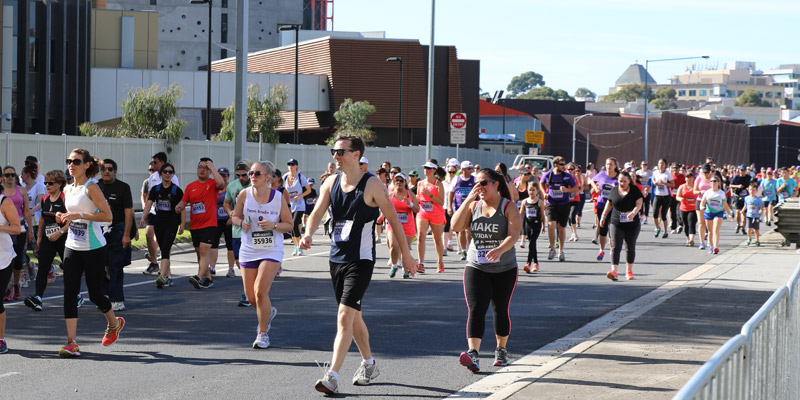Description: Sidelined because of injury or busy schedule? Read how you can regain your fitness level back.
Okay, so you’ve not been running for a while now. An injury may have sidelined you for months. You may have been sick, which prevented you from doing any sort of cardiovascular activity. Or your busy schedule may have gone in the way of your training.
Your strategy for re-establish your running routine after a long layoff would depend on how long it has been since you last run. According to the American Council on Exercise, it would take around 12 weeks for an untrained person to retain his level of physical fitness. Curiously, those who are extremely fit like professional athletes experience a significant drop in fitness just three weeks after their last training.
Here are some tips to keep in mind when you go back to running after a lengthy layoff.
1.Take it Slowly
 Take things slowly if you have been off from running by at least a week. Your cardiovascular endurance may not be as good as it was the last time that you run. Hence you can’t expect to last a 5 mile run this time if you’ve been on sickbay for the past week or so. You don’t also want to risk re-injuring yourself by pushing your body too hard.
Take things slowly if you have been off from running by at least a week. Your cardiovascular endurance may not be as good as it was the last time that you run. Hence you can’t expect to last a 5 mile run this time if you’ve been on sickbay for the past week or so. You don’t also want to risk re-injuring yourself by pushing your body too hard.
Start by running at about half the distance of your last run. You can also walk if you feel like you don’t have enough wind in you.
Avoid trying to make up for the miles that you have missed. If you insist on making up for the missed miles by running like a madman on the very first day of your return to running, then you are risking injuries.
You can also take a rest day the day after returning to running. Slowly work your way towards building your weekly mileage.
2. Perform Core Exercises
Certain exercises, especially those that target the core muscles, can help you get back into the shape that you once were before being sidelined for a lengthy period.
You can do the clam shell exercise. Start by lying on the ground, with your hear resting on your arm which is extended on the floor. Bend your knees at an angle of 90 degrees. Keep your feet together as you lift your top leg up and down, as if it is like a clam shell opening.
Repeat for 10 to 15 repetitions then switch sides. Complete three sets.
Another exercise that you can do is the so-called superman. Lie on your belly with your legs and arms straight, and the latter extended over your head. Lift your legs and arms simultaneously, raising them at least half an inch off the ground. Hold this position for at least 10 second, then lowering the legs and arms again. Repeat five to 10 times.
3. Perform Drills
You can also do running drills during the first mile or kilometer of your first run after a long layoff. These are drills that you can perform midway through your run, or every time fatigue sets in.
One of these is the glute push off drill. In this drill, you will have to squeeze your butt as your foot hits the ground. In a way, you are driving the run by pushing off the glute muscle.
Another drill is the midfoot strike with forward lean. While running, slightly lean forward and keep your chest up. Try to land more on the ball of your foot and less on the heels. This should correct overstriding, a bad habit that runners do especially after being sidelined for a long period.
Or you can increase your cadence to shorten the stride length and lessen the impact on the foot as it hits the ground.
4. Don’t Hit The Road Right Away
You can start your journey towards regaining your fitness level by running on a treadmill. One reason is that the surface of a treadmill is more forgiving compared to pavement which is important in case you’re recuperating from an injury. You can also control the pace and incline depending on your needs.
You can also go to a nearby track where you can walk or run. Its controlled and flat area is an ideal starting point for runners who are recovering from an injury.
5. Don’t Overmedicate
Avoid the use of OTC painkillers. Although these medications can help you feel better in the short term, they can do more harm than good. It can cause gastric distress and een detract you from getting the benefits of working out.
6. Cross Train
Working out every day should help build up your cardiovascular endurance. You don’t have to run every day. You can engage in other activities like cycling, swimming, or rowing on a machine you find in gyms like Anytime Fitness or World Gym. Just make sure that the activity you are to engage it won’t worsen your injury.
